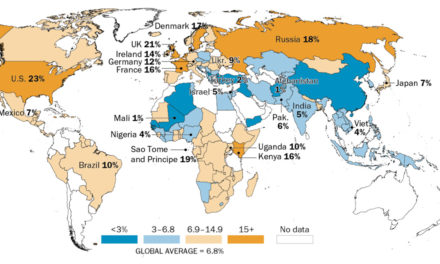Due to concerns about indoor pollutants and their effect on health issues, the U.S. Consumer Product Safety Commission (CPSC) announced that it is considering a ban on natural gas stoves.
Recent reports have shown that gas ranges may be linked to childhood asthma and other lung diseases, and that they can emit carbon monoxide, carbon dioxide, particulate matter and nitrogen oxide.
CPSC Commissioner Richard Trumka Jr. spoke with Bloomberg News and said, “This is a hidden hazard. Any option is on the table. Products that can’t be made safe can be banned.”
Trumka told Bloomberg that CPSC, located in Bethesda, Maryland, will open public comment on the issue later this year. Aside from an outright ban, the agency will also consider setting emissions standards for gas stoves.
Nationally, about 38% of households use natural gas for cooking, although that percentage varies from state to state. Topping the list for natural gas usage are California and New Jersey, with 70% and 69% respectively, reports the U.S. Energy Information Administration.
Recent reports triggered the CPSC announcement, including research from RMI (Rocky Mountain Institute), a nonprofit with a mission of “transforming the global energy system to secure a clean, prosperous, zero-carbon future for all.” The international organization has more than 550 employees and is headquartered in Basalt, Colorado.
Researchers from RMI, along with faculty from the Albert Einstein College of Medicine and the University of Sydney, published a study in the International Journal of Environmental Research and Public Health, “Population Attributable Fraction of Gas Stoves and Childhood Asthma in the United States.”
The authors reviewed 27 studies and estimated “that 12.7% of current childhood asthma in the US is attributable to gas stove use.”
“Gas stove usage should be considered in multi-faceted asthma prevention approaches. Given that this exposure is preventable, our study demonstrates that known mitigation strategies will lessen childhood asthma burden from gas stoves,” the report continued.
Brady Seals is a manager in RMI’s Carbon-Free Buildings program and a co-author of the study. She told Bloomberg, “There is about 50 years of health studies showing that gas stoves are bad for our health, and the strongest evidence is on children and children’s asthma. By having a gas connection, we are polluting the insides of our homes.”
Another study, published by Consumer Reports (CR) in October 2022, conducted 24 tests on two different gas ranges in “an insulated chamber with a range hood and a ventilation fan.”
CR Associate Director of Product Safety Ashita Kaporr said they found nitrogen dioxide “at levels above those recommended by some public health organizations for indoors, particularly when the ranges were used without ventilation and when a burner was set on high.”
The organization called the results “worrisome,” stating, “The gases can worsen asthma and other lung diseases and may increase the risk of asthma in children.”
The nonprofit consumer organization suggested using gas stoves with vented fans and range hoods and ensuring adequate ventilation while cooking.
CR plans to conduct follow-up tests “to measure emissions from a larger sample of ranges” and added that the “project was funded in part with a grant from the Climate Imperative Foundation.”
In addition to the federal government, many state and local governments are moving away from fossil fuels. RMI reported, “Across the United States, 94 cities and counties have adopted policies that require or encourage the move off fossil fuels to all-electric homes and buildings. As of December 2022, nearly 31 million people across 9 states and Washington DC live in a jurisdiction where local policies favor fossil fuel-free, healthy buildings.”
But where does all that electricity come from? The Energy Information Administration reports that about 61% of electricity generation comes “from fossil fuels—coal, natural gas, petroleum, and other gases,” with “about 19% from nuclear energy” and “about 20%” from renewable energy sources.
Bloomberg also reported, “The Inflation Reduction Act includes rebates of up to $840 for the purchase of new electric ranges as part of some $4.5 billion in funding to help low- and moderate-income households electrify their homes.”
Related articles and resources:
Blame Game Continues in Texas after Millions Left Without Power After Historic Cold Front
Facing a Cornucopia of Rising Prices, Americans Place Thanksgiving Dinner on the Chopping Block
How Long Would it Take You to Spend $3.5 trillion?
Inflation Reduction Act Misnamed, According to Experts. What it Means for Families.
Photo from Shutterstock.






